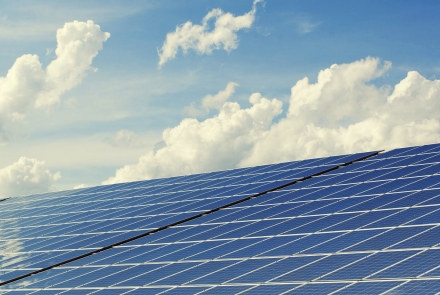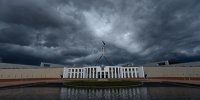
PHOTO: andreas160578 on Pixabay https://pixabay.com/en/photovoltaic-photovoltaic-system-2138992/
Recharging Australia’s energy future
With proper incentives and investment in renewables, there is no need to build more coal-fired power stations to keep Australia’s lights on, Quentin Grafton writes.
Energy storage has the potential to transform, for the better, Australia’s energy future.
A report released this week by the Australian Council of Learned Academies (ACOLA) with the Office of the Chief Scientist highlights some big news for Australia and maybe a ‘light bulb’ moment in our thinking about power.
The report says Australia can increase electricity generation from renewables to as much as 50 per cent without compromising energy reliability – the ability to meet electrical demand at all times. In terms of that reliability, the report finds that pumped hydro energy storage is, presently, the cheapest way to meet the country’s energy needs. In terms of energy security, which is about is the need to deliver near-instantaneous power for short periods (seconds to minutes) as a fast frequency response (FFR) to a power interruption due to a storm or some emergency event, there is a need for more energy storage. Indeed, if there had been sufficient FFR in South Australia in September 2016, such as through batteries, it is likely that the state would not have had the blackout it experienced.
The ACOLA report, of which I was one of the authors, finds that there are many ways to meet Australia’s energy storage needs and that what is needed are different approaches and technologies that are fit for purpose.
Some of the most cost-effective means of energy storage are pumped hydro and batteries. Fortunately, Australia is a world leader in battery research and has abundant supplies of lithium, an important component of batteries. As with any widespread take-up of new technologies, especially if home-scale batteries become much more widely used, Australians will need to carefully manage the battery supply chain – from production, to use, to disposal – to ensure safety and environmental sustainability.
A key finding of the report is that energy storage is an important part of the solution to simultaneously solving the energy trilemma of security, affordability, and sustainability.
Properly planned for, as the report explains, energy storage could provide the means for Australia to substantially increase its electricity generation from intermittent sources (such as solar and wind power) without compromising either energy security or energy reliability.
In other words, with the proper incentives and investments for energy storage, there is no need to build additional coal-fired electricity generation in order to keep the lights on.
As with any energy service, nothing comes for free, even if solar rays come at no charge. For instance, solar power costs real money because the equipment to generate electricity from the sun and then feed it into the electricity grid is not free.
The same applies for the energy storage. The ACOLA report finds that, should the entire requirement for system security in Australia be met by batteries alone, the cost of delivering this energy storage for 2030 would be $10.7 billion in a scenario where renewables contribute to half of Australia’s electricity generation in 2030. By comparison, network capital spending in the National Electricity Market has averaged about $5–6 billion each year, or some $71 billion in total if this level of expenditure were to continue annually to 2030.
The bottom line for Australians is that the modelling developed for the report shows that both energy reliability and security requirements can be delivered with existing technologies.
While these energy storage technologies are not costless they compare very favourably to building new coal-fired electricity generation plants.
With energy storage, Australia can have its cake and eat it too with energy storage, but at a price. That is to say, Australia can enjoy both high levels of energy security and reliability and also high levels of renewable electricity generation, if it makes the investments needed in energy storage. Now that is a bright idea.
This piece was first published by Policy Forum.net, the website of the Asia and the Pacific Policy Society and Crawford School. https://www.policyforum.net/recharging-australias-energy-future/
Updated: 22 November 2024/Responsible Officer: Crawford Engagement/Page Contact: CAP Web Team













